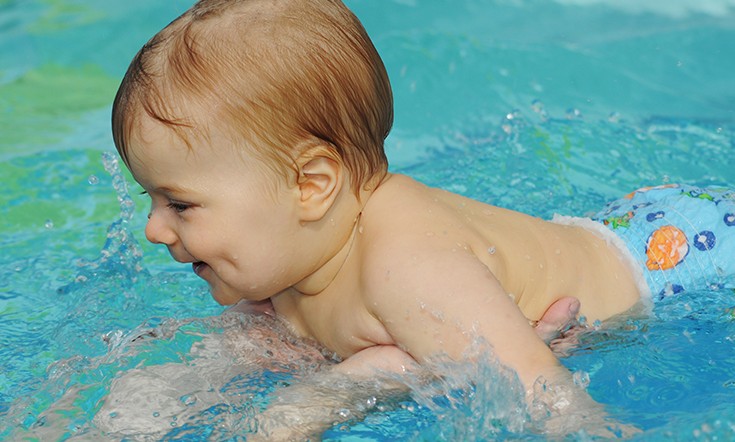

Taking your baby to the pool or beach? You can prevent accidents and make swim activities more enjoyable by using swim nappies.
Whether it’s summer or not, swim nappies are a great alternative for parents and babies. Swim nappies contain solids, preventing them from falling into the water. When choosing swim nappies, it is important that you should not size up because the nappy should fit the baby at the time he or she is using it. Most swim nappies are snug fit and won’t swell up in water like regular nappies.
There are different styles of swim nappies available. You can get a swim nappy that pulls on and off like a swimsuit or one that is easily opened with Velcro-like closures.
Disposable Vs. Washable Swim Nappies
Swim nappies have been around for some years now. You can choose to use the disposable ones or the reusable swim nappies. Using disposable swim nappies offer convenience because they are sold in most stores but it is designed for a single use only. However, they do not retain anything at all.
On the other hand, washable swim nappies are becoming more popular these days and are the perfect solution that has waterproof outer layer and a soft lining inside against your baby’s skin. It can be removed, taken home and washed, then re-use. It is widely available over the internet or instore. They are also more eco-friendly and will cost less money over time. However, they need more care, may not be sanitary and do not guarantee leakage neither do the disposables.
What To Remember When Swimming With Your Baby
Disposable swim nappies should only be used once and then placed in a garbage can and should never be reused. Reusable swim nappies can be washed, but regularly check the elastic to ensure it retains a proper fit. Even though the use of swim nappies lessens the possibility of leakage, babies should be checked regularly and take him or her to the bathroom at least once every 30 to 60 minutes. This will prevent leakage of poop into the water.
You know that faecal matter is sometimes invisible to the eye as much as they are clingy to your baby’s bottom or sticks to your hand after a nappy change. It’s also not something that’s easy to kill or control even in a chlorinated pool that is otherwise properly maintained. Pools must undergo a hyperchlorination process or have other types of filtration in place like those that use UV light. For safety issues, public pools require the use of swim nappies.
Keep in mind that when dealing with incompletely potty-trained toddlers you may find it hard to manage the situation. So use swim nappies that look just like ordinary swim wear and your baby won’t rip it off the minute you turn your back.






















